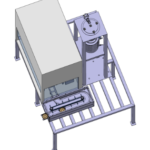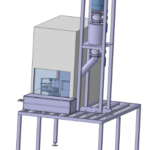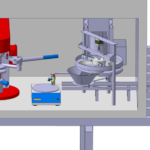Data monitoring
This part of the project is intended to facilitate the study of variables that may affect cockle farming. It consists of measuring water temperature and certain meteorological parameters (temperature, wind speed and direction, rainfall and humidity) in real time and remotely. These parameters are stored in a database on a server. Thus, they are accessible from anywhere in the world for further processing.
There are two clearly differentiated parts. The first is for data acquisition and the second is for displaying the data on a web page in an easily understandable form.
The device used to manage the reception of data from the sensors and send it to the database is a Raspberry Pi. An RF module has been added to this device to be able to communicate with the sensors wirelessly. It has also been modified by adding a Proto PCB to condition the signal received from the water temperature probe.
The outdoor weather station measures temperature, wind speed and direction, humidity and rainfall. Every few seconds, the station sends the data to the receiver, which stores it in a database using 3G technology.
The evolution of the measured parameters can be observed on the web page www.bivalplus.com, once registered as a new user, within which the option of visualizing, by means of a graph, the temporal evaluation of each parameter has been added.
This system offers the following features:
Ability to remotely access the device in order to perform tasks such as:
- Modify the interval at which the data is taken.
- Add or modify a path to a database where they are stored.
- Observe the quality of data received from the weather station.
- In case the signal quality is not adequate, it can be recalibrated.
- Fully relocatable to any location with data coverage.
- Exportable to any context for parameter monitoring.
- Easily expandable with more sensors.
- Low power consumption.
- Low cost.
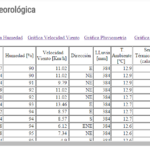
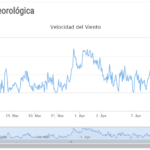


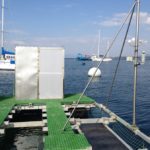
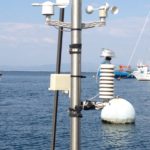
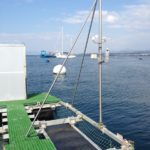
2. Suspended structure construction
The floating structure that has been placed in the Port of San Vicente de O Grove, is an experimental prototype of a seedbed, intended for the pre-fattening of slimy clam and cockle seed. This is a phase prior to planting on the beach in which the seeds are transferred with a size of 500 μm to this suspended installation so that their growth continues in the sea.
Pre-fattening of slug clam and cockle seed takes place in culture units (“drums or devices”) suspended in the water column and attached at the top to the platform. The upper end is held above the surface of the water with the aid of a float, but it should be noted that the pre-spawning of such small seed requires mechanisms to force water circulation through the meshes that retain the bivalves in the lower zone of these artifacts. This forced flow of water promotes the circulation of oxygen and nutrients through the screens, prevents the accumulation of dirt and the growth of epibionts.
This pre-fattening structure for seed is equipped with renewable energy systems and , in addition, innovative systems for integration between renewable energy and hydrogen have been incorporated. By providing these energy systems based on renewable sources, consumption is reduced and improvements are obtained from an economic, energy and sustainability point of view in the pre-fattening process of bivalves in the sea.
Parallel to the construction of the artifacts, we proceeded to the 3D CAD design of the floating structure, performing simulations and mechanical calculations as well as FEA tests to study the maximum deformations that the structure could undergo under critical loading conditions. Once the corresponding construction project had been drawn up, materials were gathered and the prototype was built.
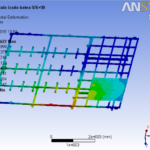
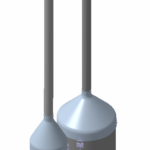

3. Design of a prototype of a semi-automatic aseptic cannery for cockles.
Up to the time of the development of this project, the canning industry used the autoclave as equipment for food sterilization. In an autoclave, microorganisms are eliminated by injecting steam at high temperature and pressure for a certain period of time and there are areas, due to the distribution of the containers, with excessive thermal load that cause great losses in the product, since part of the constituent water is released, which can reach values of 30%.
In this project, an experimental prototype of a semi-automatic aseptic cockle cannery was developed, incorporating an 11-liter temperature sterilization tank and a cooling counterpart to avoid product quality losses, a laminar flow cabinet with a HEPA H14 filter (99.995% MPPS efficiency according to EN 1822 standards), a can supply-sterilizing mechanism, a cockle feeding hopper and a can seaming equipment. All of them are interconnected and made of AISI 316 material, so that the product is never in contact with the environment from the moment it is loaded into the upper tank, thus eliminating the risk of microorganisms in the final product.

